Battle for the Best SEO
The most common question I receive from current and prospective clients is, “Which IDX website platform is best for me, Real Estate Webmasters or Sierra Interactive?” The answer isn’t as easy as most would like. In fact, at the end of our call or email exchange, the agent is often more confused, having been bombarded with so much information.
When choosing between real estate website platforms, beyond search engine optimization concerns, the agent or brokerage owner must also consider the following (in no particular order):
- Current traffic sources
- Current and desired lead flow
- Use of lead management systems (e.g. – Follow-Up Boss)
- Current and projected revenue
- Team structure & existence of inside sales agents
- Team member lead generation skills & accountability
- Cost to transfer content & leads from existing website
- The desire for maximum control vs. fewer complications
- Tolerance for ongoing development costs & normal bug fixes (custom sites)
- Platform management & associated training
- Long-term business goals
As you can see, the list of considerations is extensive. While I do consult with our clients regularly on each of these topics, our core focus is SEO. So let’s stick to what we do best! Below, I discuss the SEO features that I consider to be most important when comparing Real Estate Webmasters and Sierra Interactive platforms.
REW vs. Sierra Interactive At a Glance
| Who Has the Better… | REW | Sierra Interactive |
|---|---|---|
| Overall IDX Integration | ✔ | |
| MLS Feed Customization | ✔ | |
| Default MLS Field Options | ✔ | |
| Use of MLS Data for Advanced SEO | ✔ | |
| IDX Module Management & Display | ✔ | |
| Core SEO Attributes | ✔ | |
| Community Page URLs & Options | ✔ | |
| Listing Page URLs & Options | ✔ | |
| Blog Page URLs & Options | ✔ | |
| Usability, Site Speed, & Mobile Display Optimization | ✔ | |
| Site Customizability | ✔ |
Why Just REW & Sierra?
A fair question, with a straightforward answer:
Real Estate Webmasters (REW) and Sierra Interactive are the only two platforms I personally recommend in order to fully leverage MLS and IDX data for maximum organic search engine visibility.
Keyword being “leverage.” (Did you catch the SEO pun?)
There isn’t a shortage of real estate lead generation companies or ways to build your own real estate website. From WordPress sites to other well-known platforms like Boomtown, Chime, and Real Geeks, in my professional opinion, Sierra and REW are the only SaaS subscription-based platforms that are built from the ground up with the flexibility to leverage MLS data with SEO in mind.
Many platforms are advertised as “SEO Friendly,” but that isn’t the same as being able to leverage the data. Understanding this distinction can mean the difference between building a website worth multi-millions in the future (becoming an “asset” on its own) vs. having a website that will never reach the first page of Google for most competitive search phrases and must forever rely on paid search.
In order to leverage MLS data, you need as much control as possible; and both Sierra and REW offer this control to varying degrees.

Overall IDX Integration
(Winner: Real Estate Webmasters)
Real Estate Webmasters wins Round 1 due to the near-unlimited ability to customize, manipulate, and present MLS data. Beyond legal and MLS compliance issues, the only limitation with REW and IDX is your imagination (and money).
That said, Sierra’s default IDX integration is very strong and will suit the needs of most agents and small teams. Further, because each MLS data feed is shared with clients in the same market, Sierra is more open to making tweaks to the feed without additional charges.
1.) Ability to Customize MLS Data Feed  Advantage: REW
Advantage: REW
REW has the most flexibility—literally, the sky is the limit.
Data fields can be renamed, and the appearance of the data on listing pages can be arranged without limitation (other than MLS compliance).
Further, REW clients can customize their feed to include a “subset” data feed to whittle down the listings to certain areas of their MLS, namely in the geographic area of their brokerage. (In this case, the listings are not just “hidden” on the site, but are eliminated entirely.)
This is very helpful for clients in large MLSs — think statewide in some cases. Limiting the feed means not having to answer calls for listings potentially a few hundred miles away. It’s also better from an SEO standpoint because the listings on the site would be more focused, meaning fewer listings that need to be crawled and indexed by search engines (thereby keeping them busy indexing more important pages).
REW also offers truly comingled MLS options, where you can mix and match any communities on the same site. Sierra sites, on the other hand, are restricted by region and need to have different search options for different MLSes.
As of 2023, Sierra does have some capability to limit data feeds, but it varies from MLS to MLS. Things you can limit include property types, counties, and states, for example.
2.) Default MLS Field Options  Advantage: Sierra Interactive
Advantage: Sierra Interactive
REW has the most flexibility with data fields, but Sierra has the most fields included by default.
With REW sites, clients receive a default set of IDX data fields at install which includes the most commonly searched fields. This may be okay as is, depending on each data feed. Obtaining additional fields requires custom work. (NOTE: with REW, the ability to customize data feeds and fields allows each client’s site to be unique. This differentiation can be a significant SEO advantage in a highly competitive market.)
By contrast, in addition to the most common data fields, Sierra often includes more obscure search options as standard such as “master on main,” and other various property features like water heater types, architectural styles, views, and community amenities. If a needed field is missing, then Sierra will often accommodate this with a free support request. However, keep in mind that it’s likely your competitor with a Sierra site will receive the same benefit, since unlike REW, the feeds are shared across all clients in the same MLS.
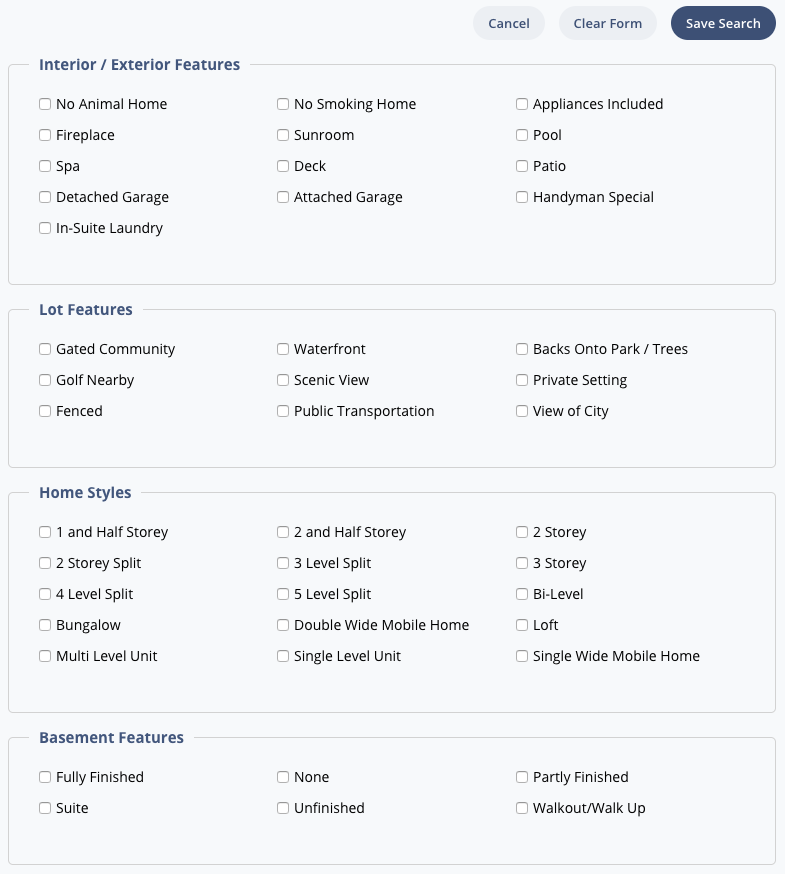
3.) Use of MLS Data for Advanced SEO  Advantage: REW
Advantage: REW
Again, REW has a major advantage here, due to the ability to customize. There are many ways you can utilize MLS data for SEO purposes which are beyond the scope of this article, but examples include custom market statistics displays, keyword-rich dynamic content, and dynamic interlinking of pages using custom rule-sets & scripts.

However, Sierra has made strides in this area over the years. Sierra has added functionality for custom listing descriptions on listing pages, as well as market performance charts based on saved searches that can be added to any page.
4.) IDX Module Management & Display on Community Pages  Advantage: Sierra
Advantage: Sierra
Known as “IDX Snippets” on REW, and “Saved Searches” on Sierra, REW has the SEO advantage here with customization options, but Sierra wins out based on intuitive usability and the addition of several features that it used to lack.
A.) IDX Module Management:
Both platforms do well with the ability to create & manage IDX searches, although Sierra has the advantage when it comes to organizing & locating Saved Searches. Additional Sierra advantages include setting up, editing & selecting data fields; ease of cloning existing searches; and previewing search results directly from the backend admin.
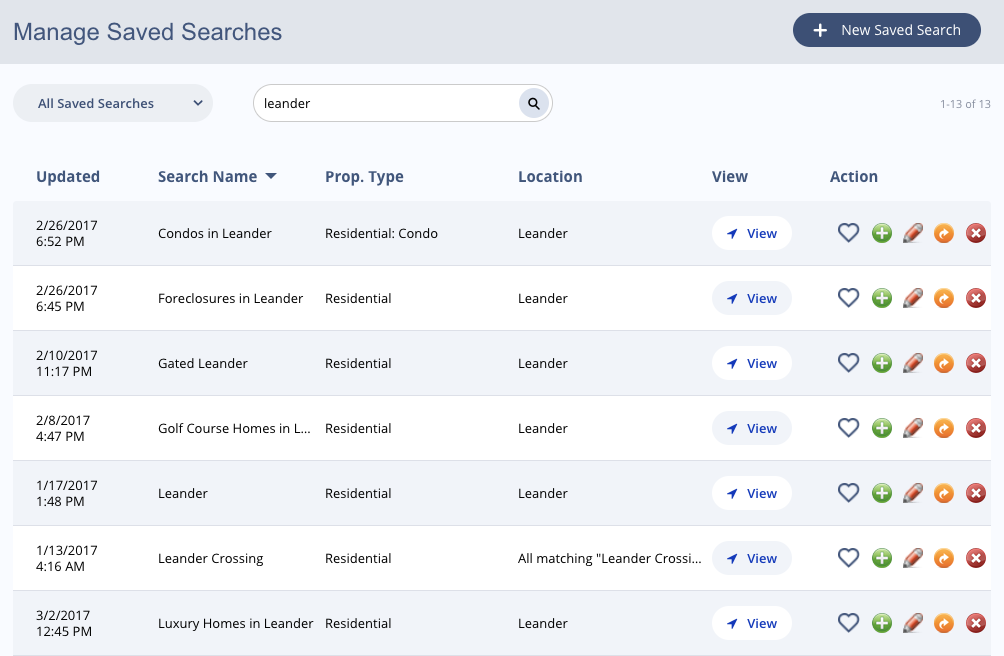
B.) IDX Module Display:
REW has a slight advantage with IDX display, even with standard installations. Both REW and Sierra have the ability to control the number of listings per page and auto-generate price range links, though Sierra requires price links to be toggled “on” on a per-page basis.
REW sites have less use of Javascript, and therefore the HTML/code and links that point to each listing are naturally more “crawl-able” and SEO-friendly. However, some REW sites have suffered from poorly implemented pagination that causes crawling issues as Google continually updates its SEO best practices.
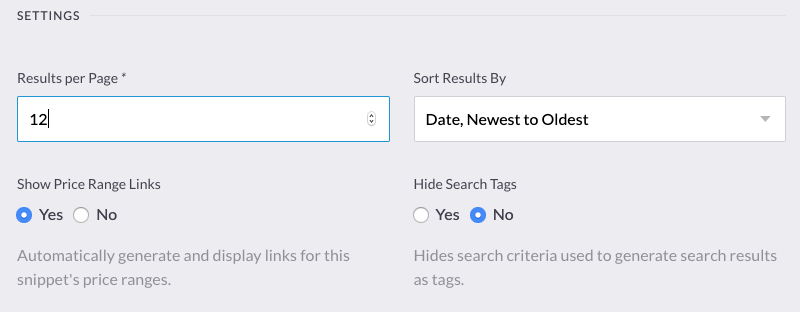

Round 2: Core SEO Attributes
(Winner: Sierra Interactive)
Sierra Interactive wins Round 2 due to a more complete set of features that are easy to manage. As with many features discussed in this article, REW can do nearly anything you desire with a custom website, but Sierra includes these features by default.
1.) Community Pages URLs and Options  Advantage: Sierra Interactive
Advantage: Sierra Interactive
Sierra is a winner for community page management. This is one area where REW could use some improvement to the core product, instead of relying on customization. There are too many to mention—below are the most important for SEO:
A.) URLs:
Both REW and Sierra allow you to customize community page URLs. However, Sierra’s advantage is that it allows for a two-tier hierarchy URL structure by default, meaning that rather than this:
domain.com/nashville-heatherwood/ (flat URL structure)
you can do this:
domain.com/nashville/heatherwood/ (nested URL structure)
Without diving into all the SEO lingo, just know that a nested URL structure is a preferred way of organizing sites and creating URLs—they provide better context for search engine crawlers and are easier for users to navigate, which helps user metrics and, in turn, further improves SEO potential.
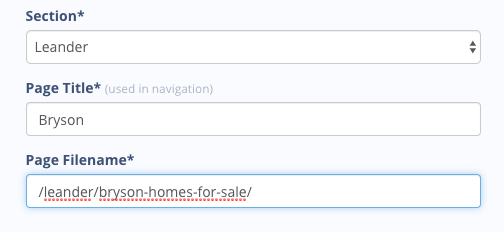
B.) NoIndex/NoFollow Options:
This allows you the ability to direct search engines to avoid indexing specific pages. This can come in very handy when creating separate landing pages for PPC, and when creating pages for marketing or internal use. Sierra offers this as standard.

C.) Sidebar Navigation Options:
Also standard on Sierra is the ability to set up and use different sidebars for entire sets of pages and to override the selection on specific pages. Having sidebars with contextual and related links to other pages (rather than a list of all main pages on the site) significantly improves SEO potential and is easier for users.

D.) Dynamic Menu Creation (tagging):
Known as “Content Labels” on Sierra, this allows you to build menus of links behind the scenes by simply “tagging” a page with the chosen “label.” These dynamically created menus can then be placed on any page using what are known as “Page Components.” Further, anytime you update a URL, the menus are instantly updated on every page.
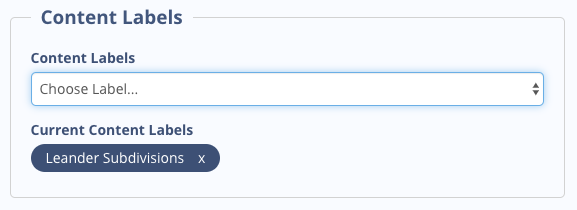
With REW, you can build shared menus (known as “CMS snippets”), but they are built with manually edited HTML code. On Sierra, the ability to simply tag a page means no messing with code and fewer chances for broken links.
E.) Community Page/Listing Page Cross-linking:
A standard feature of Sierra, this allows you to link a city page, neighborhood page, condo building page, school page, or zip code page with a related listing page. When that community or location is mentioned under the details on the listing page, it automatically creates a link from the listing page back to the corresponding community page. This creates significant and contextual inner linking across the site. This is a commonly customized option on REW.
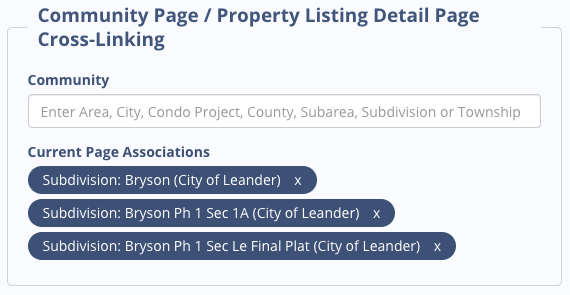
2.) Listing Pages – Display, URLs and Options  Advantage: REW
Advantage: REW
Strictly from an SEO standpoint, REW has a major advantage with Listing Pages for three reasons: a.) the URL structure, b.) the manner in which listing pages are linked from community page IDX modules (see Round 1, Section 4B above), and listing page content/display.
A.) Listing Page URLs:
On REW sites, the listing page URLs are usually acceptable by default. If not, then you have the ability to customize them using multiple MLS parameters. For example, you may want a URL which read like this:
domain.com/listing/212574-640-tree-ridge-lane-brentwood-tn-37027/
domain.com/listing/{mls}-{address}-{city}-{state}-{zip}
Other data fields are often available by default, including: {ListingPrice}, {ListingType}, {ListingSubType}, {ListingStyle}, {ListingStatus}, {Address}, {AddressArea}, {AddressSubdivision}, {AddressCity}, {AddressCounty}, {AddressState}, {AddressZipCode}, {NumberOfBedrooms}, {NumberOfBathrooms}, {NumberOfSqFt}, and {YearBuilt}.
(That said, you really wouldn’t want to include any parameters that may change, such as the price, because that would cause unnecessary redirects, which would severely limit ranking potential for listing pages.)

To compare, here is an example of the default Sierra listing page URL structure:
domain.com/property-search/640-tree-ridge-lane-brentwood-tn-37027/pid-124415291/
On Sierra, listing page URLs are standard for all sites, except for the root folder—you may choose between /property/, /property-search/, /idx/, or /mls/.
You can request a custom URL structure for listings on Sierra, but by default, they’re not as well-structured as REW URLs. Without customization, you also run the risk that multiple Sierra sites in the same market will likely have the same listing page URLs, which can limit visibility.
B.) Listing Page Display & Options:
On listing pages, REW wins points for custom options, including dynamic text insertions (with IDX parameters), unlimited options for layout, and overall endless SEO potential. Differentiation is an important factor when trying to maximize organic visibility, particularly for listing pages, so ultimately REW has the advantage.
Sierra has added the ability to include custom descriptions on listing pages, though, which makes the gap smaller than it used to be.
In addition, Sierra wins with lead conversion in our experience. Sierra’s standard listing pages appear to be converting better than standard REW pages these days, from both organic and PPC search. After completing a major overhaul of its listing pages, Sierra’s conversion rates significantly increased. That said, there are many factors that impact conversion, including local market nuances, competition, and even something as simple as choosing to have a male or female agent thumbnail on the page. Therefore, without doing A/B testing with the same site in the same market, no one can truly say one is better than the other.
Although good at conversion, I’m not sure Sierra’s listing pages would win any design contests. That said, who would point at Amazon’s product pages and say, “Wow, now that’s a gorgeous-looking page?” At the end of the day, the name of the game is conversion. A custom site client on REW can be optimized for conversion to their heart’s content while also having the SEO advantages.
3.) Blog Pages URLs and Options  Advantage: Sierra Interactive
Advantage: Sierra Interactive
I hesitate to include this section because blog functionality and options for both platforms could be improved, from both where management and SEO abilities are concerned. But, Sierra wins here because the standard feature set is better, and it’s easier for marketing assistants to manage.
For example, REW is missing the ability to control the Blog URL and Blog Title separately. (There’s a “hack” required to accomplish that.) Also, the URLs on REW blogs end in .html, which is outdated compared to a simple trailing slash. Further, page and text formatting tools for blogs are better on Sierra. Finally, simply managing blog entries is much easier on Sierra, and less prone to user error.
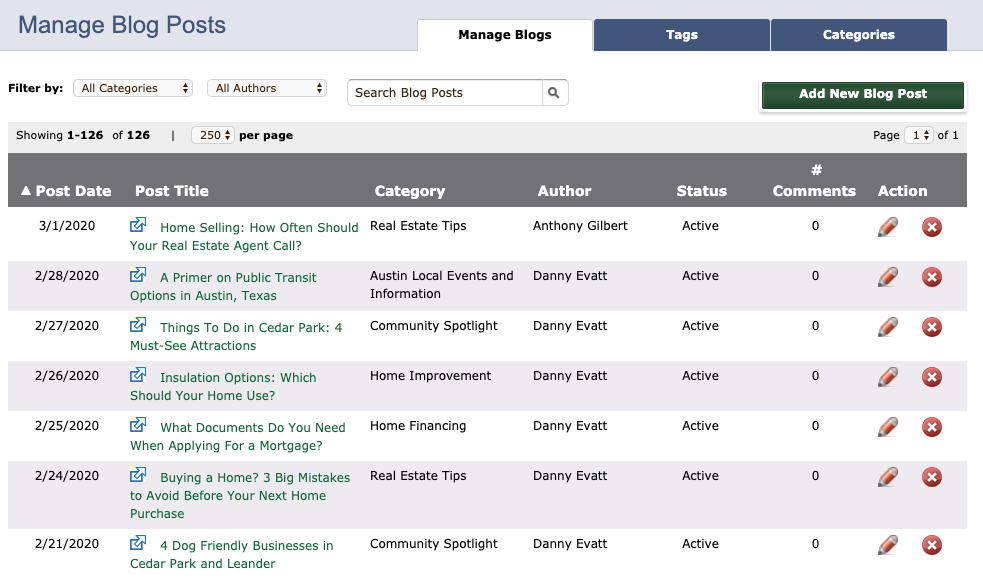
Both platforms should consider eliminating the use of “tags,” as without further blog control options, they are too often leading to incorrect usage and SEO complications that can require significant time to unwind.

Round 3:
Usability, Mobile Display & Site Speed
(Winner: Sierra Interactive)
In terms of standard installs, Sierra wins this round. However, this doesn’t mean REW isn’t competitive—far from it. Sierra has an advantage because they do not offer fully custom websites. So we’re not comparing apples to apples.
Every Sierra website shares a code base that is updated regularly. Therefore, beyond template and styling differences (and your custom content), Sierra sites are mostly uniform. This means the sites can be optimized for mobile & speed more easily, and those improvements can be rapidly pushed to all client sites at regular intervals.
But this core strength of Sierra is also a weakness, in that they cannot be customized to any significant degree, beyond the home page (known as Sierra “Premier Sites”).
By contrast, REW sites are intended to be customized so that they represent each client’s individual business. REW offers clients the ability to convey their brand’s unique selling proposition and services via fully custom design and programming—the sky is the limit.
However, the nature of customization means adding an unlimited number of variables to the mix, which therefore means that each individual site (and each subsequent design and code refresh) must be optimized for the best usability, mobile display, and speed performance.
Unfortunately, many REW clients do not fully consider what type of budget is required to build and maintain a custom site. Therefore, they risk underfunding (or not funding) the SEO portion of their project. The potential result is a gorgeous website that few users find organically in the search engines.
Make no mistake, with either REW or Sierra, unless you plan to rely on paid search (which means you’re leaving untold sums of money on the table in the long run), then either platform will require significant investment in search engine optimization and content promotion.
Overall Winner: YOU
(if you make the right choice)
I know what you’re thinking… “What? I’ve read a 3,000-word article and you’re not going to tell me which one I should choose?”
The most difficult part of my job is avoiding the temptation of telling clients what they should do. Instead, I’m here to provide information so they may make the best decisions for their business.
The choice between REW vs. Sierra for SEO may seem clear, but that assumes that everyone’s market, budget, and business goals are the same—and of course, they never are.
I will say the following, however…
If you are a new agent, an experienced individual agent, or a small(ish) team leader reading this, then it’s likely that Sierra Interactive is the better fit for you at this time.
However, if you are already leading a successful team, and/or have a growing brokerage, are looking to significantly grow your organic presence, and have a realistic budget to consistently *INVEST* in website development & related SEO (I recommend a minimum of $75K per year), then Real Estate Webmasters may prove to be a better fit.
Real Estate Webmasters vs. Sierra Interactive FAQ
Real Estate Webmasters Pricing vs. Sierra Interactive Pricing
REW has three pricing plans:
- Agent/Small Team (up to 10 CRM licenses): $500/month
- Team – Brokerage (up to 40 CRM licenses): $1,000/month
- Enterprise (scales to any size): $1,500+/month
Sierra Interactive has two pricing plans, plus several add-on options
- Core Package (five users; +$100/month for additional five users): $499.95+/month
- Growth Package (five users; +$100/month for additional five users): contact Sierra for pricing
Both platforms have had setup fees in the past, but have since done away with them. Both options also have add-ons for additional requirements, such as additional users.
(Note: This is current at the time of this writing. Contact the vendor directly to check current prices, discounts, and terms.)
However, this overview is greatly simplified and doesn’t tell the full story. The reason why I recommend a minimum budget of $75K per year for REW websites is that REW’s greatest asset—customization—adds additional cost. You’ll be paying an hourly rate for the work of the Professional Services and SEO teams, which includes all custom work. This adds up, especially since extensively customized sites can reach a point where the nonbillable Support team can no longer reasonably assist.
Understand that SEO is an ongoing investment, not a short-term project. Your site will need to be maintained and updated in keeping with changes in SEO best practices.
What are the Top Real Estate Lead Generation Companies?
In my professional opinion, Sierra Interactive and Real Estate Webmasters are the best platforms to create a real estate lead generation website. They’re the only SaaS subscription-based platforms that allow you the control to fully leverage MLS and IDX data to generate maximum organic search traffic.
Organic search traffic is unquestionably something you should strive for to build your real estate website into an ongoing asset. While the value of PPC vs. organic lead generation can vary depending on your goals, when you’re in it for the long haul, organic SEO is the better long-term investment for qualified leads.

 October 17, 2023
October 17, 2023



